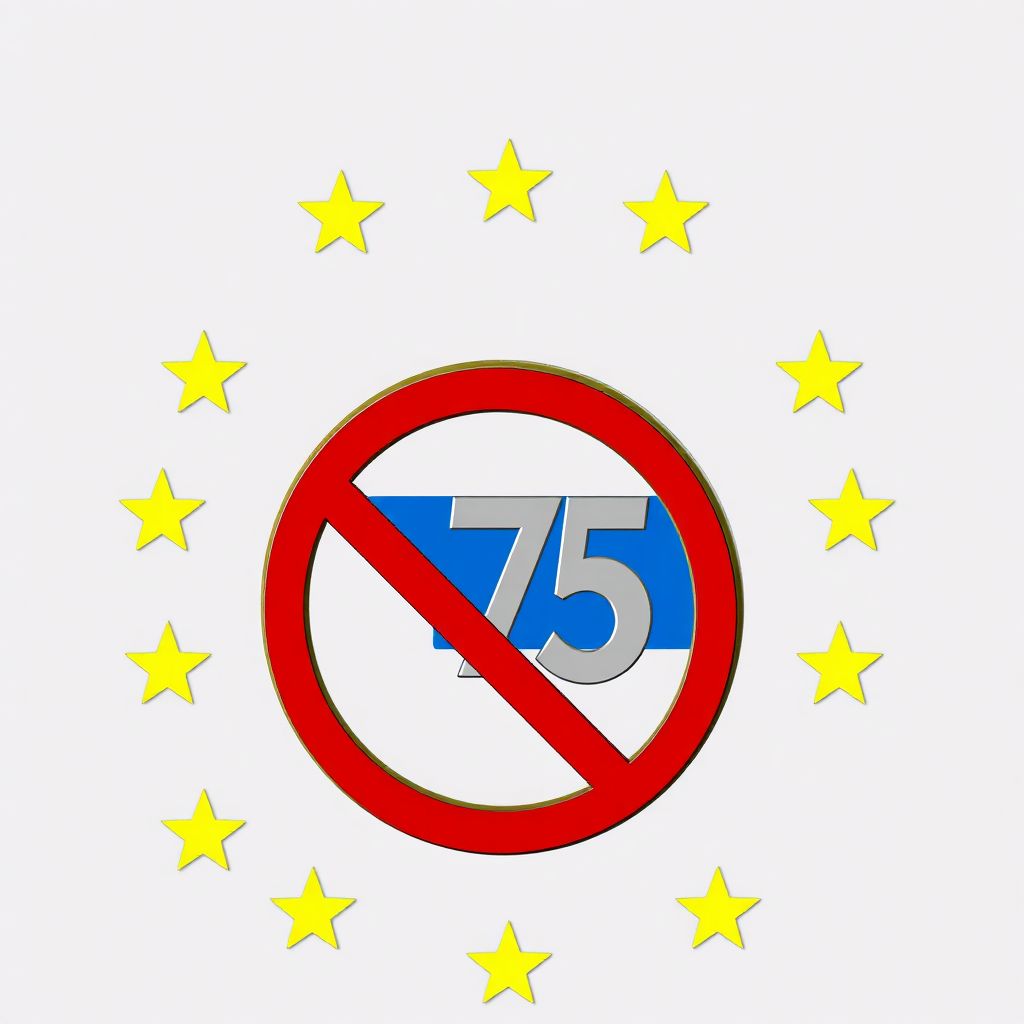The European Union has intensified its economic pressure on Russia by imposing a ban on the A7A5 stablecoin, a state-linked digital currency backed by the Russian ruble. This move is part of the EU’s 19th sanctions package targeting sectors that are seen as sustaining Russia’s military operations in Ukraine. For the first time, the EU has entirely prohibited transactions involving the A7A5 stablecoin within its jurisdiction, signaling a major shift in how digital assets are treated in the context of geopolitical conflicts.
The A7A5 token, reportedly developed with backing from Russian state entities, has been a key component in facilitating international crypto transactions for actors aligned with the Kremlin. Alongside banning the token itself, EU regulators have sanctioned the Kyrgyz-based issuer responsible for the stablecoin’s development, as well as the operator of a trading platform where A7A5 was actively used. Additionally, a Paraguay-based crypto exchange that allegedly played a significant role in processing Russian crypto transactions has also been blacklisted.
This crackdown follows rising concerns among Western officials that Moscow is increasingly relying on digital currencies to circumvent conventional financial restrictions. According to investigative reports, A7A5 has reportedly facilitated more than $15 billion in illicit or covert transactions, helping Russian entities bypass global banking systems and sanctions. These transactions allegedly support the ongoing war effort by enabling discreet capital movement across borders.
In response, the EU has not only targeted foreign platforms but has also moved to restrict its own crypto and fintech sectors from offering services that could assist Russia in setting up alternative financial channels. These new rules are designed to close existing loopholes that have allowed sanctioned individuals and organizations to continue operating under the radar of international regulatory bodies.
This latest sanction comes shortly after Russian Finance Minister Anton Siluanov expressed intentions to legalize the use of cryptocurrencies in international trade. Siluanov acknowledged the strategic importance of crypto in enabling global transactions outside of the traditional financial network, while also stressing the necessity of implementing stricter regulatory controls. The timing of the EU’s action appears to be a direct response to Russia’s growing interest in leveraging blockchain technology to mitigate the impact of Western economic isolation.
A7A5 has emerged as a critical infrastructure piece in Russia’s evolving digital economy. Its adoption for cross-border settlements has allowed Moscow to sidestep banking restrictions, especially in regions with less stringent regulatory oversight. By cutting off access to this stablecoin and pressuring offshore exchanges, the EU aims to disrupt these unofficial financial pipelines that sustain sanctioned sectors of the Russian economy.
The broader implications of this move extend beyond just one token. The EU’s actions signal a readiness to treat digital currencies as tools of geopolitical influence, particularly when they are entwined with state-backed efforts to defy international norms. The sanctions demonstrate how stablecoins, once seen as neutral financial instruments, can become instruments of statecraft and economic warfare.
Furthermore, these measures could set a precedent for how other jurisdictions deal with national digital currencies and stablecoins developed or supported by governments under sanctions. As digital assets become more integrated into global trade and finance, regulatory bodies are likely to adopt increasingly sophisticated approaches to monitor and control their usage.
This development also raises questions about the future of crypto anonymity and decentralization. As governments clamp down on specific tokens and platforms, the once-borderless world of digital currency is becoming subject to the same geopolitical tensions that shape traditional finance. Developers and exchanges may now face greater scrutiny regarding the origin, use, and compliance of the tokens they support.
For Russia, the EU’s decision may force a strategic pivot. Without access to international crypto infrastructure, Moscow’s options for using digital assets in foreign trade become limited. Domestic solutions, such as launching a fully state-controlled central bank digital currency (CBDC), might gain momentum, but such efforts would take time to mature and gain international traction.
In the meantime, Russian authorities may increase their cooperation with countries that have a neutral or favorable stance toward its digital finance initiatives. This could lead to a fragmented global crypto market, where certain stablecoins and exchanges operate in sanctioned or semi-sanctioned ecosystems, isolated from Western influence.
The EU’s sanctions on A7A5 mark a turning point in the convergence of digital finance and international diplomacy. As the crypto industry continues to evolve, regulatory responses like this one underscore the growing importance of blockchain assets in shaping global economic and political dynamics.

